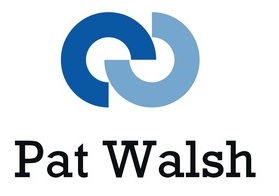This glossary explains some of the terms used when talking about Web Usability, SEO, Websites and Usability in general.
Above the fold / Below the fold
‘the fold’ marks the end of the visible part of the web page. Therefore, ‘above the fold’ means the area of the web page that is visible without scrolling. ‘below the fold’ is the area of the web page that requires scrolling to see.
Banner blindness
This is the situation where a website user ignores banner-like information on a website. The banner information may or may not be an ad.
Breadcrumbs
A useful navigation element that allows users to see where they currently are in the website, plus the previous pages in the flow. Normally the user can click any of the links shown to jump to that page, with the exception of the current page.
Call to action
An action point on a web page, which asks a user to perform a particular action. e.g. “Buy Widgets”
Cascading menu
A menu structure where submenus open from a main menu.
Embedded Link
A link that is within the text content of a web page.
Homepage
The initial page of a website.
Inbound Link
A link into a website from another website.
Keyword
A significant word indicating the content of a website or web page. e.g. For this page it could be ‘glossary’. Keyphrases are similar to keywords, connecting these keywords to form a descriptive phrase, such as ‘web usability glossary’.
Link Building
An SEO activity, designed to increase both the quantity and quality of inbound links to a website. It involves a mixture of different activities such as: creating quality website content to achieve ‘natural links’ and ‘outreach link building’.
Meta data
This refers to part of web page content which is not displayed to the user but contains vital information about the contents of the web page. The main meta data types are “description” and “keywords”. These still play an active role in Search Engine Optimisation, although with less priority than in the past.
Mouseover
Feedback from a piece of website navigation when the cursor is placed over it. An example is a link which changes colour when the cursor is over it.
Natural Links
Links which develop naturally as part of the linking nature of the web, where a website will link to another website’s content – perhaps where it finds the content high quality, relevant and useful – and thus worthy of a link and it’s own visitor’s attention.
Outreach Link Building
This is also known as manual link building and involves work in contacting relevant bloggers, websites, people of authority, gurus, subject experts etc to inform them of quality content in the hope they will recognise the quality of the content and link to it from their own website.
Page title
The title text for a web page, as shown in the titlebar of the web browser.
ROI
Return On Investment. The ratio of money gained – or lost – relative to the amount invested.
Scanning
The action of a user quickly scanning the content of a web page looking for important navigation items, headings, keywords, calls to action etc.
Search engine spider / Spider / Crawler / Robot
This is a program or automated process which crawls over web pages – hence the spider references – and is used to collect information by search engine providers such as Google. The spider will crawl from link to link that it finds on each page thus building up its knowledge of a web page and the layout of a website.
Search Engine Optimisation (SEO)
Search Engine Optimisation (SEO) is the process of optimising a website’s position in search engines such as Google.
Site map
Usually a text display of a web site’s layout.
Split A/B tests
These are tests where two different versions of a web page or piece of functionality are tested at the same time by users, who don’t actually realise they are getting different content to other users. The results of these tests – e.g. which version led to more sales – can then be used to decide which version should be used.
Tab / Tab menu
Navigation items which allow links to be presented as a set of items and will often be presented to appear like tabs within a folder as in the real world.
Tagline
A phrase, usually below a web page’s logo, which quickly introduces the website to the user. This may be a slogan, motto, catchphrase, byword etc.
Type ahead search
A search which shows results as each character of the search term is entered.
UCD
User-centred design. Design based around the needs and aims of users.
Web usability
Refers to the ease-of-use and user-friendliness of a website, from the user’s point of view. Other factors also include effectiveness, efficiency and ‘learnability’ of the website.
*** There is now a downloadable version of this content.

